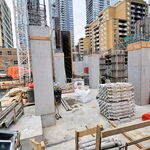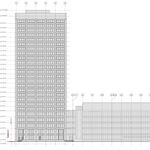canarob
Senior Member
Last year I emailed GO for a breakdown of 2008 ridership by line because this was not included in GO's annual report as in previous years (http://urbantoronto.ca/showthread.php?11077-2008-GO-Ridership-Figures).
This year I emailed Metrolinx and they sent me figures for both 2009 and 2010. The biggest surprise is that ridership on Lakeshore East still hasn't recovered to its 2008 peak. Also, you can really see how the recession stalled system-wide growth. Otherwise, Barrie growing the fastest between 08-09 and Milton growing the fastest between 09-10 are hardly surprising results.
The format I'm using is 2010 Figure (Change over 2009) | 2009 Figure (Change over 2008) | 2008 Figure | 2001 Figure (Change from 2001 to 2010). 2001 figures are the oldest I have.
Barrie: 3,462,500 (5.16%) | 3,292,600 (6.73%) | 3,084,900 | 1,153,500 (200.17%)
Stouffville: 3,597,900 (6.97%) | 3,363,600 (1.96%) | 3,299,100 | 1,384,500 (159.87%)
Richmond Hill: 2,330,700 (1.89%) | 2,287,500 (0.81%) | 2,269,200 | 1,774,500 (31.34%)
Georgetown: 4,634,200 (6.79%) | 4,339,700 (0.55%) | 4,315,800 | 3,030,000 (52.94%)
Milton: 7,348,200 (7.67%) | 6,824,900 (1.75%) | 6,707,600 | 4,766,500 (54.16%)
Lakeshore East: 11,818,800 (1.41%) | 11,654,800 (-3.20%) | 12,040,200 | 10,428,500 (13.33%)
Lakeshore West: 14,849,600 (1.96%) | 14,564,000 (-1.37%) | 14,766,700 | 12,468,500 (19.10%)
Train & Related subtotal: 48,041,900 (3.70%) | 46,327,100 (-0.34%) | 46,483,500 | 35,006,000 (37.24%)
GO Bus subtotal: 9,056,100 (5.67%) | 8,570,400 (4.53%) | 8,199,100 | 8,333,610 (8.67%*)
*Note: 2001 GO bus figure includes Langstaff route that was transferred to YRT
Total: 57,098,000 (4.01%) | 54,897,500 (0.39%) | 54,682,600 | 43,339,610 (31.75%)
2008-2010 Increase in Number of Riders
Barrie: 377,600
Stouffville: 298,800
Richmond Hill: 61,500
Georgetown: 318,400
Milton: 640,600
Lakeshore East: -221,400
Lakeshore West: 82,900
As a Stouffville rider, I don't want to hear about half-hour frequencies on Lakeshore until we at least get something close to all-day service (and weekend trains!). I'm sure Barrie, Georgetown and Milton riders would agree!
2001-2010 Increase in Number of Riders
Barrie: 2,309,000
Stouffville: 2,213,400
Richmond Hill: 556,200
Georgetown: 1,604,200
Milton: 2,581,700
Lakeshore East: 1,390,300
Lakeshore West: 2,381,100
This year I emailed Metrolinx and they sent me figures for both 2009 and 2010. The biggest surprise is that ridership on Lakeshore East still hasn't recovered to its 2008 peak. Also, you can really see how the recession stalled system-wide growth. Otherwise, Barrie growing the fastest between 08-09 and Milton growing the fastest between 09-10 are hardly surprising results.
The format I'm using is 2010 Figure (Change over 2009) | 2009 Figure (Change over 2008) | 2008 Figure | 2001 Figure (Change from 2001 to 2010). 2001 figures are the oldest I have.
Barrie: 3,462,500 (5.16%) | 3,292,600 (6.73%) | 3,084,900 | 1,153,500 (200.17%)
Stouffville: 3,597,900 (6.97%) | 3,363,600 (1.96%) | 3,299,100 | 1,384,500 (159.87%)
Richmond Hill: 2,330,700 (1.89%) | 2,287,500 (0.81%) | 2,269,200 | 1,774,500 (31.34%)
Georgetown: 4,634,200 (6.79%) | 4,339,700 (0.55%) | 4,315,800 | 3,030,000 (52.94%)
Milton: 7,348,200 (7.67%) | 6,824,900 (1.75%) | 6,707,600 | 4,766,500 (54.16%)
Lakeshore East: 11,818,800 (1.41%) | 11,654,800 (-3.20%) | 12,040,200 | 10,428,500 (13.33%)
Lakeshore West: 14,849,600 (1.96%) | 14,564,000 (-1.37%) | 14,766,700 | 12,468,500 (19.10%)
Train & Related subtotal: 48,041,900 (3.70%) | 46,327,100 (-0.34%) | 46,483,500 | 35,006,000 (37.24%)
GO Bus subtotal: 9,056,100 (5.67%) | 8,570,400 (4.53%) | 8,199,100 | 8,333,610 (8.67%*)
*Note: 2001 GO bus figure includes Langstaff route that was transferred to YRT
Total: 57,098,000 (4.01%) | 54,897,500 (0.39%) | 54,682,600 | 43,339,610 (31.75%)
2008-2010 Increase in Number of Riders
Barrie: 377,600
Stouffville: 298,800
Richmond Hill: 61,500
Georgetown: 318,400
Milton: 640,600
Lakeshore East: -221,400
Lakeshore West: 82,900
As a Stouffville rider, I don't want to hear about half-hour frequencies on Lakeshore until we at least get something close to all-day service (and weekend trains!). I'm sure Barrie, Georgetown and Milton riders would agree!
2001-2010 Increase in Number of Riders
Barrie: 2,309,000
Stouffville: 2,213,400
Richmond Hill: 556,200
Georgetown: 1,604,200
Milton: 2,581,700
Lakeshore East: 1,390,300
Lakeshore West: 2,381,100




